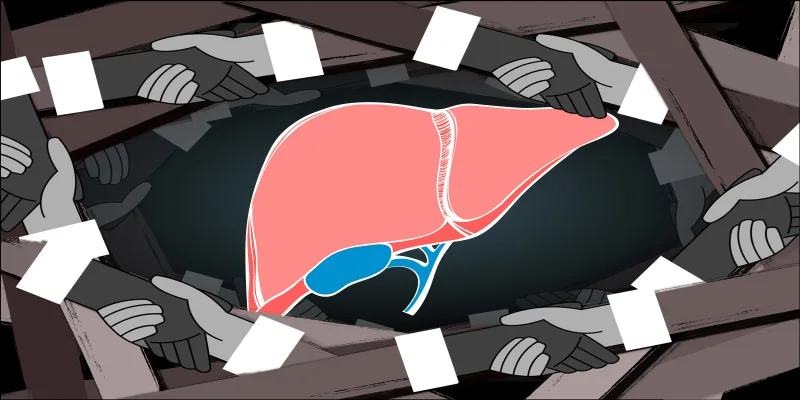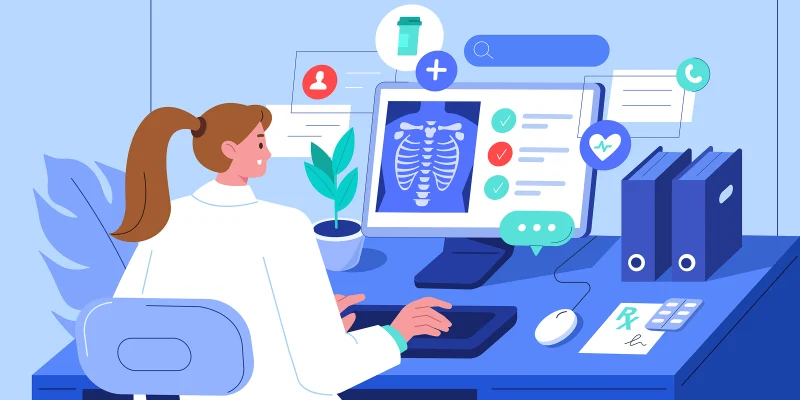
I was working in a hospital-based radiation oncology practice at a rural community hospital that was part of a larger integrated system — my only job since residency. It was a professional partnership, where both parties enjoyed an exclusive contract with our hospital that served a large catchment area. We had a good relationship with our colleagues at three large academic centers a few hours away where we would refer our more complex cases. After dealing with the headaches of meaningful use EHR, Physician Quality Reporting System, Medicare Access and CHIP Reauthorization Act, Merit-based Incentive Payment System, and a possible Radiation Oncology Alternative Payment Model for several years, we were eager to enter into a management "partnership" with a well-known consulting company that would help us with compliance and billing for a small percentage of our earnings.
Unbeknownst to us, this company was already in the process of being acquired by a large medical device corporation, which we ultimately found out through an article in The Cancer Letter. The consulting company assured us that nothing would change with new ownership, and in fact, things would improve with the infusion of capital from the acquisition. I was then appointed to be the clinical lead of our hospital system’s Radiation Oncology Clinical Institute, which spanned multiple states. In no more than six months, this medical device corporation sold their interest in our practice (and other practices in our system) to an international health care investment cooperative. The sale got considerable publicity due to the high price of the transaction, and a sizable deposit was made into our practice account to promote quality initiatives with no strings attached. We had no complaints about that.
One Tuesday morning, I got a text while performing a rectal exam on a newly diagnosed prostate cancer patient. I completed my exam, left the exam room to review a radiation treatment plan, and then returned to the exam room to obtain written consent from the patient and answer any lingering questions. When I returned to my office to dictate, I realized I had been texted three times from the same 877 number, with the final text requesting I call the 800 number ASAP. After entering the ICD-10 code into Mosaiq, I called the number. An automated voice that resembled Alexa answered.
"Dr. Luh, it took you five minutes and 32 seconds to respond to our third text message. We expect you to answer all text messages within four minutes. This is a test of the new paging response system. You may return to your clinical duties."
I blurted, "Who do you work for?" Click.
I was annoyed by this disruption in my workflow that added no value to patient care. I was already dealing with the constant interruptions to check cone beam CT (CBCT) scans at the console for shifts that exceeded tolerance thresholds defined by my image-guided radiation therapy (IGRT) directive.
Just before lunch, I passed by the office of Mike, one of my partners. We usually shoot the breeze for a few minutes and walk to the clinicians’ lounge together, but he was preoccupied and waved me off saying he had no time to chat and had to get more efficient. He was busy contouring volumes for a complex head and neck cancer intensity-modulated radiation therapy (IMRT) plan. I was already done with my two morning consults, with notes dictated, simulation orders completed, prescriptions entered, and IGRT directive filled out. Our department is blessed to be right around the corner from the clinicians’ lounge that serves the entire hospital. After chatting with the surgeon, hospitalist, and infectious disease specialist, I got my plate of lukewarm meatloaf, salad, and vegetable soup and sat down with my colleagues. Just after taking my third bite of meatloaf, I got a text from the same 877 number requesting a call back.
The same Alexa voice said, "Doctor, based on our tracking of your movements, you entered the lounge at 12:03 p.m. It is now 12:31 p.m. You have exceeded your 15-minute break time. Please return to your clinical duties." Click.
I furiously redialed the call back number and was greeted by, "That extension is no longer in service."
Over the rest of the afternoon, while struggling to see all my follow-up patients and complete my documentation, I received emails and texts from my out-of-town radiation oncology colleagues in the same hospital network who were venting about getting similar calls. A constipated radiation oncologist in another state took longer than five minutes in the bathroom while his radiation therapists were waiting for him to approve a verification CBCT. Another was informed that, while approving daily CBCT images, she had neglected to scroll through the sagittal and coronal planes of the registered images, only scrolling through the axial slices prior to electronic approval. Yet another radiation oncologist texted me to say that he was told he approved a lung IMRT plan prematurely without opening the dose statistics window to review the dose volume histograms of the normal tissues. Finally, one of my colleagues at a sister hospital was reprimanded for signing notes in Epic while waiting for CBCT images to load in Mosaiq; the multitasking was discouraged. He was told that patient safety mandated that he focus on the screen for the entire time it took to load CBCT images so as not to be distracted.
I felt violated by this micromanagement and was going to get to the bottom of this. I wanted to find out where these texts were coming from and how they were tracking our every movement (or lack thereof). I tried different phone numbers, Google, Twitter, and LinkedIn, and even got so desperate as to reach out to my anonymous dark-web colleagues on the Student Doctor Network — all to no avail.
I had already stayed in the clinic much longer than planned. Just when I was about to click another link to a possible lead, I received a text from the 877 number that said, "Give up your inquiries, which are completely useless, and consider this message a final warning. We hope, for your own good, this will be sufficient. Your first patient starts treatment at 8 a.m. tomorrow. Please be punctual to comply with supervision requirements.”
At this point, I was both angry and scared. It was not a good day. I was going to join my physician colleagues for our usual Wednesday night basketball scrimmage at a nearby middle school gymnasium where an orthopedic surgeon’s wife, who was the athletic director, allowed us to use the facility. I would get to work off the frustrations accumulated during this particularly stressful day. As I was about to get out of my car, I got another 877 text asking me to call back. With sweaty fingers, I called the number.
"Dr. Luh, your transit time was five minutes longer than expected,” the voice said. “We suggest you take the Bayside cutoff after exiting Highway 101 to Old Arcata Road next time instead of the Sunny Brae exit. Please remember to stretch and warm up prior to your game. If you do not, any injury sustained during your activity will not be covered by your disability policy. There are already nine players in the gymnasium and your opposing team has been selected, which includes your radiation oncology colleague Michael. Our analysis shows that his hallway ambulation speed decreased 35% today. Of the members of the opposing team, we suggest that you guard him."
Dr. Join Y. Luh is a radiation oncologist practicing in a rural community with an interest in physician autonomy. He is on the advisory board of Crux Quality Solutions and a majority shareholder of Actimatech, Inc. Dr. James S. Newman is a hospitalist at the Mayo Clinic in Rochester, MN. The feelings and opinions expressed in this work of fiction belong to the characters and should not be confused with those of the authors.






